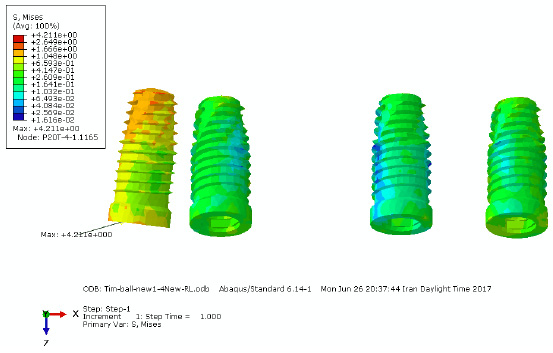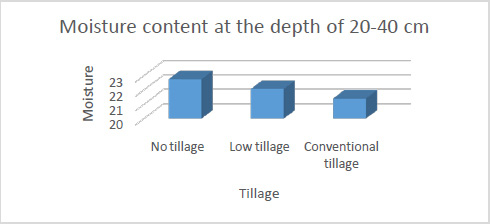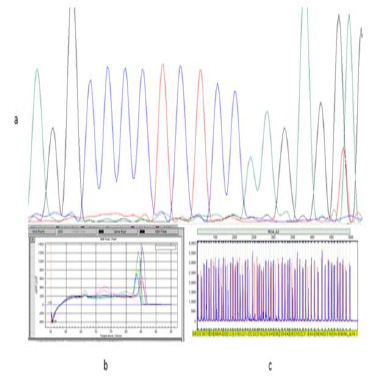1Research Scholar School of Energy & Environment Management, Rajiv Gandhi Proudyogiki Vishwavidyalaya, Bhopal, Madhya Pradesh, 462033 India
2Associate Professor School of Energy & Environment Management, Rajiv Gandhi Proudyogiki Vishwavidyalaya, Bhopal, Madhya Pradesh, 462033 India
Corresponding author Email: somikhan363@gmail.com
Article Publishing History
Received: 03/04/2018
Accepted After Revision: 06/06/2018
The existing practices of electronic waste in India suffer manyproblems like the difficulty in inventorization, legislation, poor awareness of electronic waste management and unhealthy conditions of informal recycling. The study was focused on inventories of e-waste in Bhopal city which is in the capital of the state and generates a database for the future plan and provide statistical data affecting the generation of E-Waste in Bhopal as well as prepare an inventory of electronic waste. This can help to prepare an action plan for Waste Electrical and Electronic Equipment which can be formulated and give a quantitative and qualitative analysis of WEEE generation in Bhopal City. The main objective of the study inventorization of seven electronic sub-sectors like refrigerators, mobile phones, television computers, air conditioners, washing machines and waste batteries in Bhopal city of the state. The present practices of electronic and electrical waste of management having many drawbacks like unhealthy conditions of informal recycling, the difficulty in inventorization, poor awareness inadequate legislation, these are the critical issues, during the site visit interviews total 120 questionnaires were collected, 50 questionnaires business entities and 70 from household and collect 432MT e-waste during the survey.
E-Waste, Recycle, Inventorization, Reuse, Disposal
Khan S, Vyas S. Inventorization of Electronic Waste Management, Engaging with Consumption: a Survey in Bhopal. Biosc.Biotech.Res.Comm. 2018;11(2).
Khan S, Vyas S. Inventorization of Electronic Waste Management, Engaging with Consumption: a Survey in Bhopal. Biosc.Biotech.Res.Comm. 2018;11(2). Available from: https://bit.ly/2zb6nIV
Introduction
Electronic waste management becomes burning issue all over the world, because growth in demand and consumption of electronic goods had led huge amount of waste and this waste become a new type of waste called electronic waste. So there is dire need to adopt sustainable practices so that we can handle a waste, (Schwarzer 2005). Electronic Waste, as the name represent, comprises of electronic and electrical equipment such as computers, cell phones and other electrical devices which are destined for recycling or disposal, (Robinson 2009). The amount of electronic dump generated globally has been estimated to reach about 72 billion tons annually by 2017, (Bisschop 2014).
E-waste informal processing sitescan be located near agricultural fields and other cropland where heavymetals and other contaminate can penetrate into the soil where food isgrown, (Song and Li 2014). Human exposure to halogenated flame retardants (HFR) overdermal adsorption by skin wipe. Dermal absorption would be animportant exposure route for HFR. Liu et al. (2017).
 |
Figure 1: Map of Bhopal city |
 |
Figure 2: Average Weight Of the Equipment |
Developing countries leading the pack in accepting electronic waste since thedeveloped world today include China, India, Pakistan, and Nigeria, (Garlapati 2016).
The electrical and electronic equipment’s are largely classified into three parts as:- comprising of household usages like air conditioners, refrigerators and dishwashers, washing machines are ‘white goods,’ computers, printers, fax machines, scanners, etc are’; ‘grey goods,’ comprising of TVs, camcorders, cameras are ‘brown goods, Sinha (2007). PCBs, dioxins, and heavy metals in their essential forms, Lead, Nickel, Cadmium and Lithium are found in used batteries, abundant the ones being massproducedin electric vehicles. Organophosphate flame retardants and plasticizers in urine example of the people living in an e-wastedismantling site (Lin et al., (2017).
 |
Figure 3: Discarded E-Waste |
 |
Figure 4: Electronic waste handing |
Despitethe risk of many developing countries do not have proper regulationsand policies in place to protect the local people and environment. Example, in Nigeria exquisite metals are removed from circuit boardsby using acid, and then dumping them onto the ground or into streams, (Kiddee et al., 2013).
Figure 5: Source of electronic waste
| Home | Hospital | Government sectors | Private sectors |
| Pc | pc | Fax machine | Boiler |
| Fan | ECG device | Xerox machine | Mixture |
| Fridge | Microscope | Scanner | Incubator |
| Washing machine | Incubator | Fan | Fan |
| Refrigerator | fan | Tube lights | etc. |
| CD player | etc. | Air conditioner |
The University of the Negev researchers used cathoderay tube exhibit the financial incentive system. Theproper recycling facilities would offer a higher price for the CRTs thatcould be earned thru the informal recyclers manually dismantling them.This would provide motivation for the informal recyclers totake the collected CRTs to the formal sector to go through recycling.These material incentives encourage a relationship between theinformal and formal sectors, (Davis and Garb, 2015).
| Table 1: Total generation of batteries | ||
| S. No | Total Generation of Batteries | Quantity
|
| 1 | Average Weight | 30 kg |
| 2 | Total Usage of Batteries in no. | 3845 |
| 3 | E-Waste of Batteries in Last 5 years in no. | 4784 |
| 4 | Yearly Batteries Generation in KG | 8942kg/year |
| 5 | Batteries generation in MT | 8.94 mt/year |
| Table 2: Total Generation of Air-Conditioners | ||
| S. No. | Total Generation of AC | Quantity |
| 1 | Average Weight in 1 AC | 35 kg |
| 2 | Total usage of AC in no | 1123 |
| 3 | E-Waste of AC in Last 5 years in no. | 1565 |
| 4 | Yearly AC Generation in KG | 14.23 kg |
| 5 | AC generation in MT | 14.22 mt/year |
‘Meeting the needs of the present generations without compromising the capacity of upcoming generations to meet their own needs by Hester et al., (2012). Faster obsolescence and subsequent up-gradation of electronics product, are forcing consumers to discard old products, which in turn accumulate huge e-waste to the solid waste stream, (Bhat and Patil, 2014).
| Table 3: Total Generation of Refrigerator | ||
| S. No | Total Generation of Refrigerator | Quantity |
| 1 | Average Weight in 1 Fridge | 48 kg |
| 2 | Total Usage of Refrigerator in no | 9374 |
| 3 | E-Waste of Fridge in Last 5 years in no | 2045 |
| 4 | Yearly Fridge Generation in KG | 13256.77 kg/year |
| 5 | Refrigerator generation in MT | 13.25 mt/year |
Informal recycling practices: preferably, all electronic waste should be recycled informal recycling facilities. However, because of the formal electronic waste facilities are costly to operate construct as well as, especially in less developed countries, informal recycling sites are prevalent. The informal e-waste sector consists of sites that excerpt the valuable parts of the electronics and electrical equipment using crude recycling and disposal methods usually without any kind of shelter equipment such as goggles or gloves or the assistance of technology, (An et al. 2015).
| Table 4: Total Generation of television | ||
| S. No. | Total Generation of TV | Quantity |
| 1 | Average Weight in 1 T.V. | 36.2 kg |
| 2 | Total usage of TV in no. | 8952 |
| 3 | E-Waste of T.V. in Last years in no | 2173 |
| 4 | Yearly T.V. Generation in KG | 1644.25 kg/year |
| 5 | Yearly T.V. Generation in MT | 16.44 mt/year |
| Table 5: Total Generation of Washing Machine | ||
| S. No | Total Generation of Washing Machine | Quantity
|
| 1 | Average Weight | 65 kg |
| 2 | Total Usage of Washing Machine in no. | 7543 |
| 3 | E-Waste of WM in Last 5 years in no | 3687 |
| 4 | Yearly WM Generation in KG | 5389 kg/year |
| 5 | Washing Machine generation in MT | 53.89 mt/year |
Technological innovations and intense marketing engender a rapid replacement process, the Basel Convention, which is reduction of Tran’s boundary movements of hazardous and other wastes including the minimization and prevention of their generation, the environmentally sound management of such wastes and transfer as well as use of technologies. Sthiannopkaoand Wong (2013).
A Draft Strategic Plan has been proposed for the implementation of the Basel Convention, The Draft Strategic Plan takes into account existing regional plans, strategies or programs, the decisions of the Conference of the Parties and its subsidiary bodies, ongoing project activities and process of international environmental governance and sustainable development and also calls the management and effective involvement by all concerned stakeholders essential for the aims of the Basel Declaration within the approach. Of interrelated and equally support strategies are proposed to support the concrete implementation of the activities as indicated1989 in the website( http://www.basel.int/).
Material and Methods
Site Selection
The study of electronic waste was conducted in Bhopal cities which is one of the biggest city, located in Madhya Pradesh. The electronic waste generators and business entities, household, institutions are the consumers of the electronic and electrical equipment’s they were targeted in this study the survey location is based on the socioeconomic status of the area as well as population density of Bhopal.The population of Bhopal metropolitan area that extends beyond Bhopal city was 1,886,100. The total effective literacy rate was 85.24%, with male and female literacy respectively at 89.2% and 80.1cording to Census in 2011 next will be held on 2021.
Studies and Data Collection
Field data were collected through the questionnaire-based survey; paper studies of their official sites give a better result than mail survey. The study was targeted following categories of electronic and electrical equipment such as televisions, mobile phones, personal computers air conditioners, refrigerators, washing machines for quantifications and estimations of e-waste produced, we collecteddata from the government office, household private sectors second-hand shops.
Emailing Questionnaire
E-mail is the most useful method for collecting data a standardized e-mail was attached to the questionnaire so that it would attract the recipient to read the email and participate in answering the questionnaire.
Results and Discussion
Computers
A Computer is an electronic device which contains many toxic components such as mercury PCBs, CRT chromium, and cadmium. A Monitor having 6% lead which is dangerous for our health as well as affects our environment generally, electrical and electronic equipment is sent to the landfilling, which produces toxic element, like cadmium lead mercury into the atmosphere ground and soil releases negative impact.
Television Sets
The average weight of the television is 36.2 kg, during the survey, find that total around 8952 televisions were used, since last 5 years the generation of electronic waste is approximate 2173 kg so the yearly generation 1644 kg/year.
Refrigerators
Total of 9374 refrigerators are in use, and according to respondents most of the refrigerators have an average lifespan of 10-12 years. Maximum discarded refrigerators are used for exchange purposes to buy new refrigerator so the yearly generation is 13256.77 kg/year.
Air Conditioners
On an average it is found that in every two household, one number of AC is being possessed by the respondent, brand new air conditioners were found to be used for a long time. Maximum respondents have discarded their air conditioner by exchange offer only and few respondents have given to scraping dealer, total 1123 air conditioners are used so the e-waste yearly generation is 14.23kg/year.
Washing Machines
Total 7543 washing machines are used on an averageand it is found that each household respondent possessed one number of washing machines. Brand new washing machinewas found to be used for a long time. Many respondents have discarded their washing machine either by exchange offers or by giving to scrap dealer so the e -waste yearly generation is 5389kg/year.
Computation Of Electronic Waste Generation In Last Year From Data Collected
Reduction of volume
Method which subtract the hazardous parts of waste materials from non-hazardous parts, includes in volume reduction these methodsare basically use for capacity reduction also price of deposing of e-waste also reduce waste steam capacity and divided into two parts:-
- Waste concentration
- Source segregation
The technique for waste reduction can be simple and economical by segregation of wastes. Different types of metal are present in a waste material can be treated simply which can improve the metal value of sludge. Waste can be recycled by the technique of vacuum filtration also gravity or inverse osmosis or ultra-filtration etc.
Reuse and recycle
In this method, we can reduce the price of waste removal and raw materials also deliver profitable waste income. Repair facility of waste materials can be provided onsite as well as off-site. Reverse osmosis, condensation, electrolytic repair, filtration are the physical and chemical method which is used to recover and reuse the waste material
Sustainable product design
- Redesign the product:- use less amount of hazardous materials, to design the product example redesign the new computer which has flatter lighter and integrated materials
- Use of renewable materials and energy: – plant-based chemical are used to make bio-based plastics.
- Use non-toxic and non-renewable materials:-material which are non-renewable use such that they can recycle and reuse. Example some parts of processor product as dell and Gateway lease.
Conclusion
Electronic waste has suffered major concern in maximum countries in the world, mainly those countries where electronics and electrical waste is imported as well as unregulated function processed and generating significant opposing environmental effect the evaluation of the study indicates that in 2016, electronic and equipment waste is calculated and the total collection of e waste is estimated in around 432 MT in Bhopal city which is in the Madhya Pradesh and increases year by years. According to the report, 16 registered recycle they collect the electronic and electrical waste and process the electronic and electrical equipment waste in India. Reuse and recycle system were implemented in India it is very important issue for sustainability, globally and domestically both.
Acknowledgment
Authors would like to thank Dr.Mukesh Pandey Head Department School of Energy & Environment Management RGPV Bhopal for providing the facilities required in completing the project work.
References
An D, Yang Y, Chai X, Xi B, Dong L, et al. (2015) Mitigating pollution of hazardous materials from WEEE of China: Portfolio selection for a sustainable future based on multi-criteria decision making. Res Censer and Recycle 105: 198.
Bhat, V. &Patil,Y. (2014). Mobile User’s Perspectives towards E-Waste: A Case of Pune city International journal of academic conferences proceeding, 1[21].
H. Robinson, Science of the Total Environment E-waste : An assessment of global production and environmental impacts Sci. Total Environ., vol. 408, no. 2, pp. 183–191, 2009.
Davis J, Garb Y (2015) A model for partnering with the informal e-waste industry: Rationale, principles and a case study. Res Censer and Recycle 105: 73.
Garlapati VK (2016) E-waste in India and developed countries: Management, recycling, business and biotechnological initiatives. Renew and Sustain Ener Rev 54: 874-881. Kiddee P, Naidu R, Wong M (2013) Electronic waste management approaches: An overview. WasteManagement 33: 1237-1250.
Bisschop, How e-Waste Challenges Environmental Governance,Int. J. Crime, Justice Soc. Democr., vol. 3, no. 2, pp. 81–85, Aug. 2014.
Lin X, Xu X, Zeng X, Huo X (2017) Decreased vaccine antibody titers following exposure to multiple metals and metalloids in e-waste-exposed preschool children. Environ Pollu 220: 354-363. Sthiannopkao S, Wong MH (2013) Handling e-waste in developed and developing countries: Initiatives, practices, and consequences. Sci of the Tot Environ 463: 1147-1153.
Liu X, Yu G, Gao Z, Wang B, Huang J, et al. (2017) Estimation of human exposure to halogenated flame retardants through dermal adsorption by skin wipe. Chemo 168: 272-278.
Kiddee, R. Naidu, and M. H. Wong, Electronic waste management approaches: an overview Waste Manag., vol. 33, no. 5, pp. 1237–50, May 2013.
Ronald E. Hester, Roy M. Harrison EU Directive 2012/19/EU of The European Parliament And of the Council of 4 July 2012 on Waste Electrical and Electronic Equipment (WEEE)
Schwarzer S., and BonoA.D.E- waste, the hidden side of IT equipment’s manufacturing and use, Environment Alert Bulletin. 5 (2005)
Sinha S. Downside of the Digital Revolution Published in Toxics Link, 28/12/2007
Song Q, Li J (2014) A systematic review of the human body burden of ewasteexposure in China. Environ Int 68: 82-93.
Sthiannopkao and M. H. Wong, Handling e-waste in developed and developing countries: initiatives, practices, and consequences.Sci. Total
Environ., vol. 463–464, pp. 1147–53, Oct. 2013.


